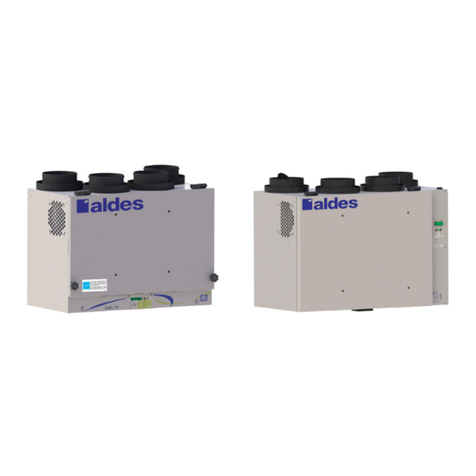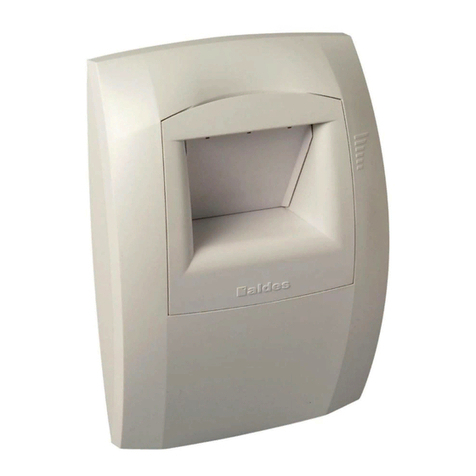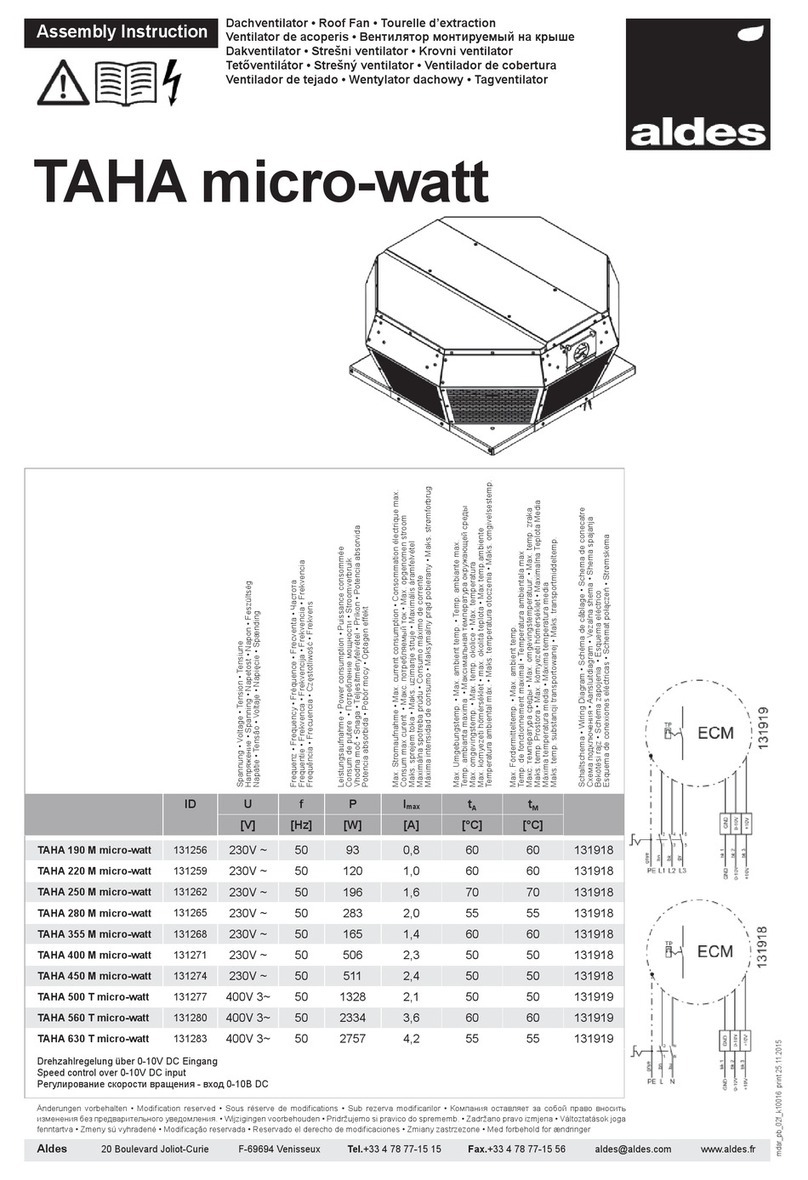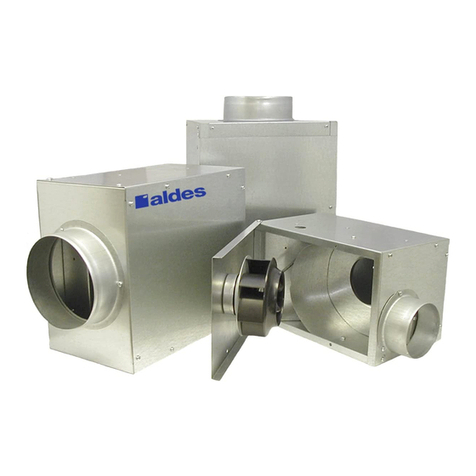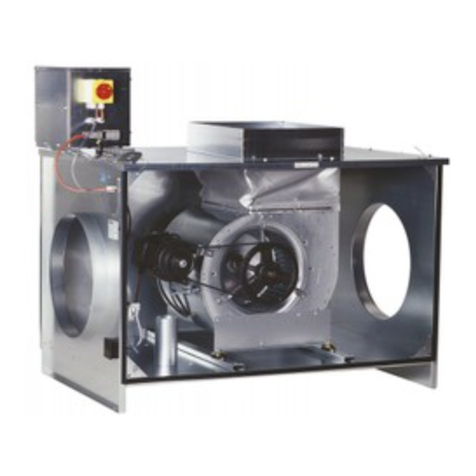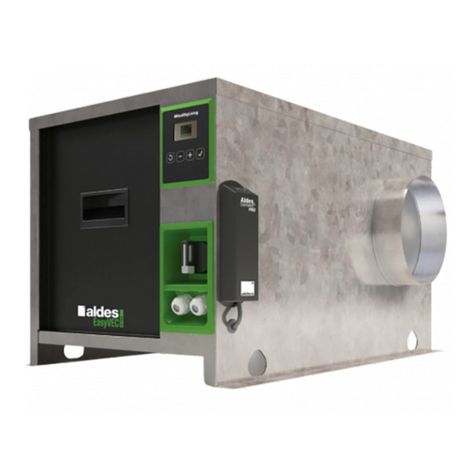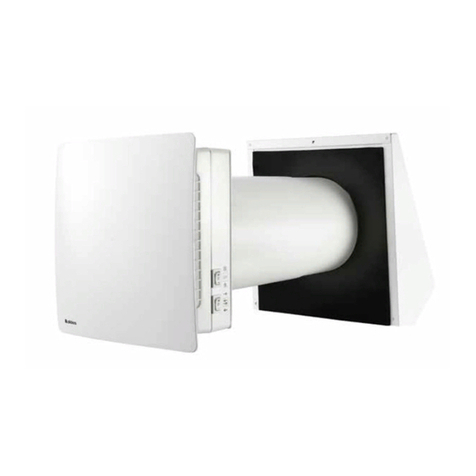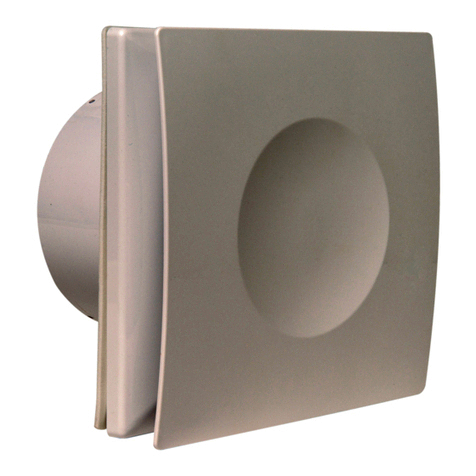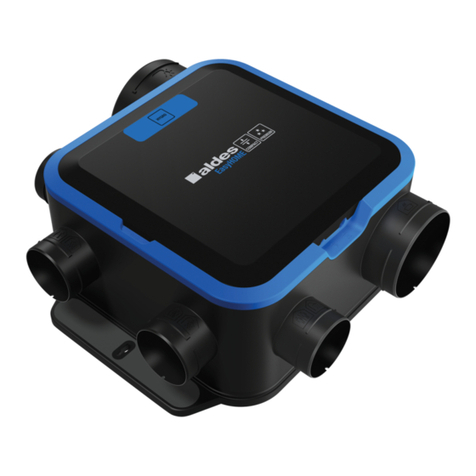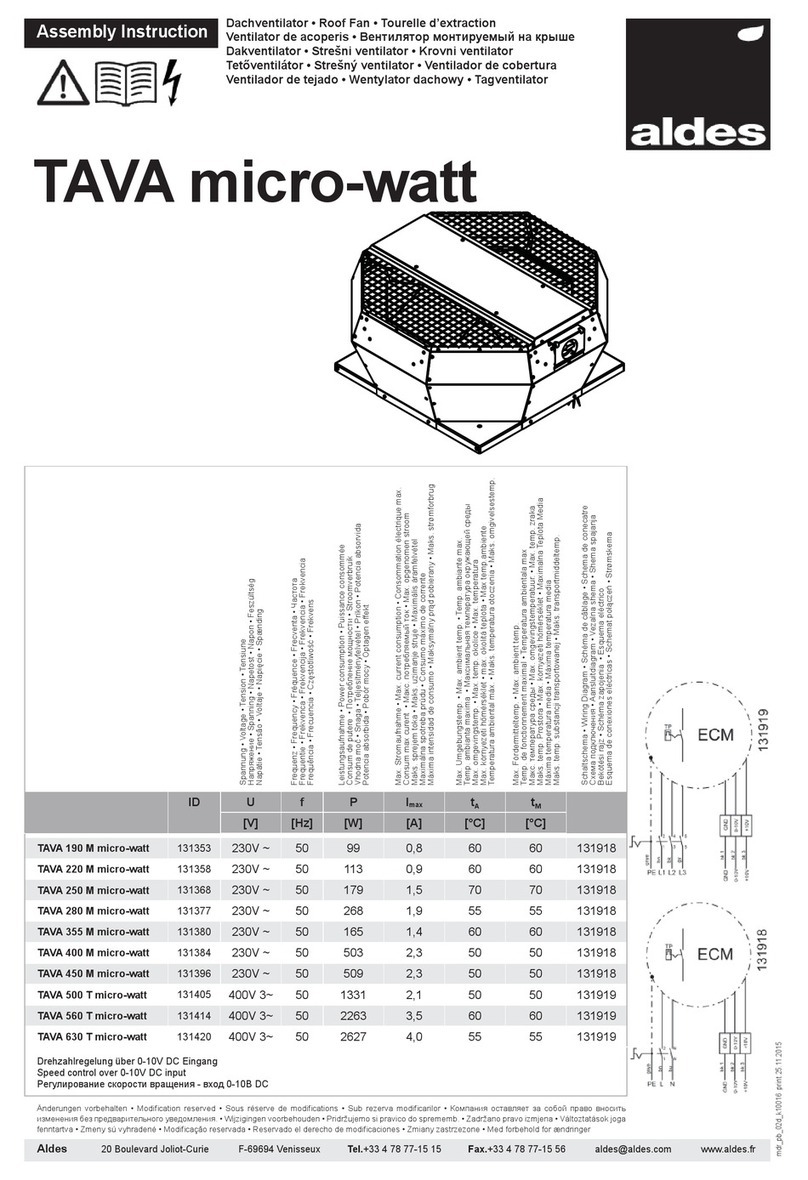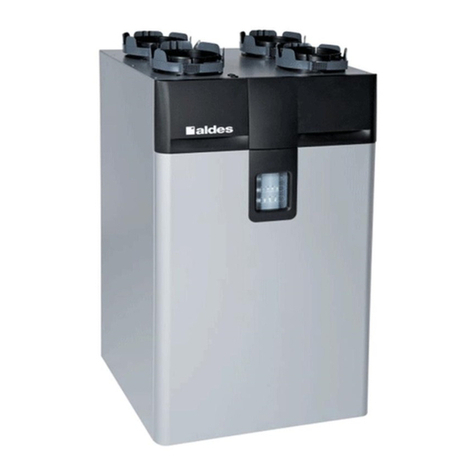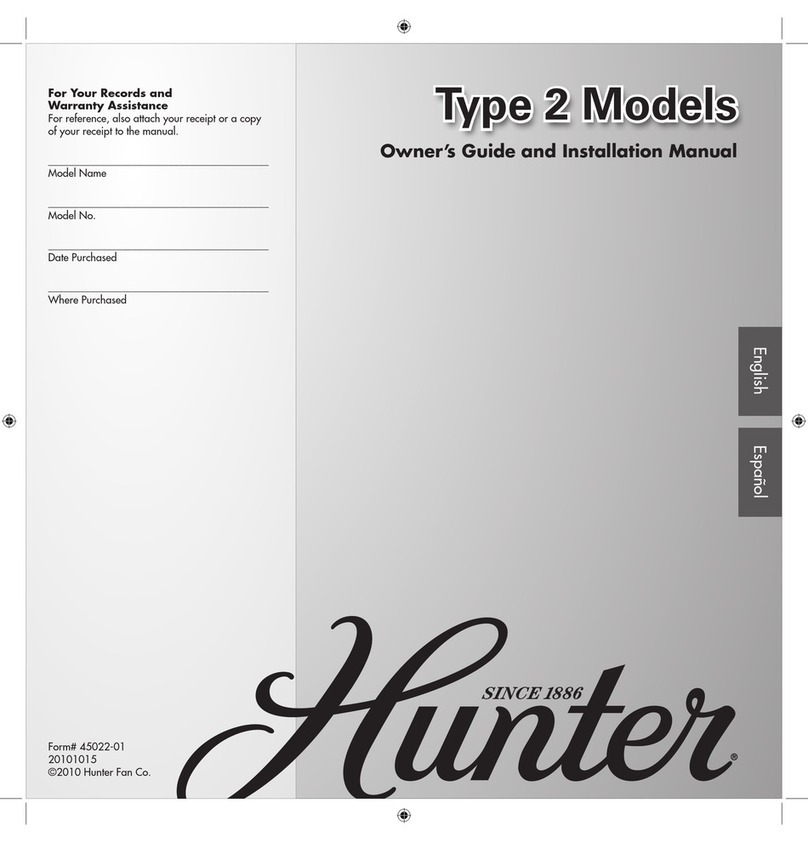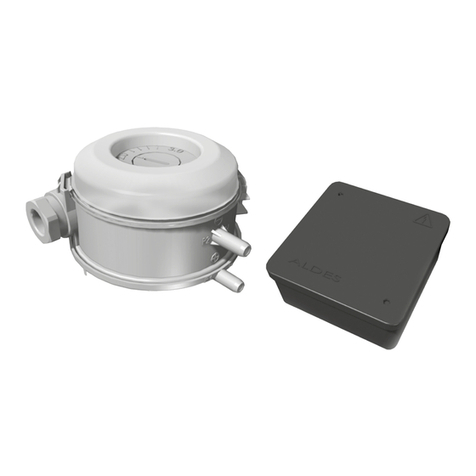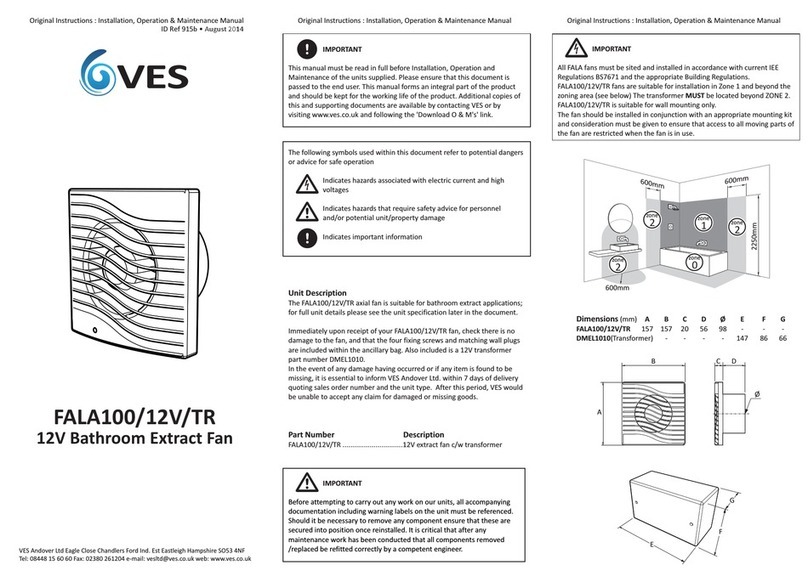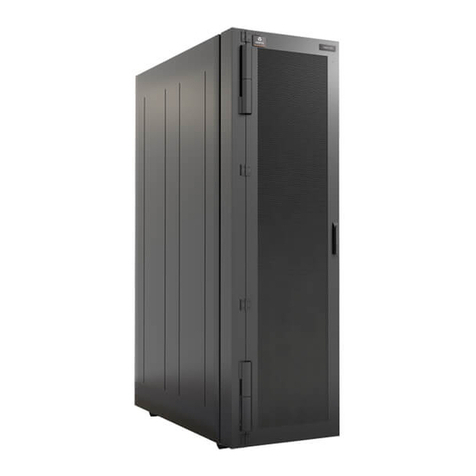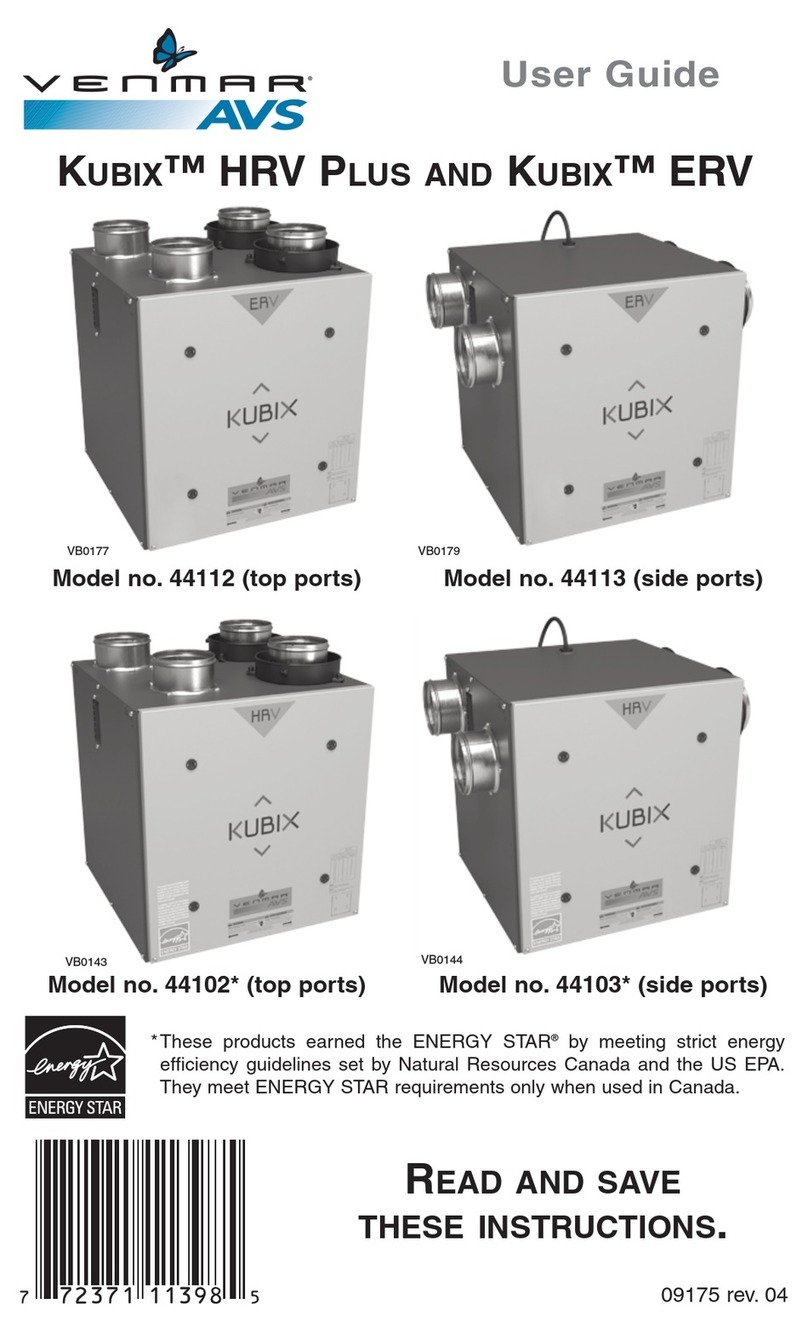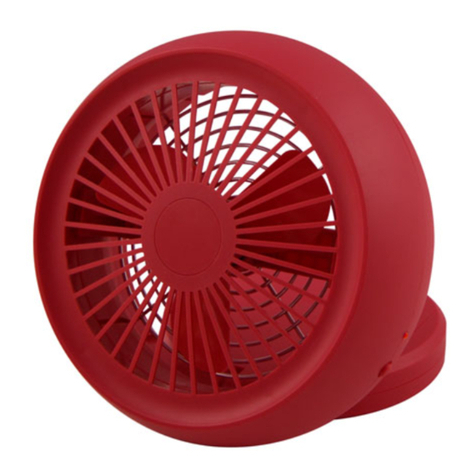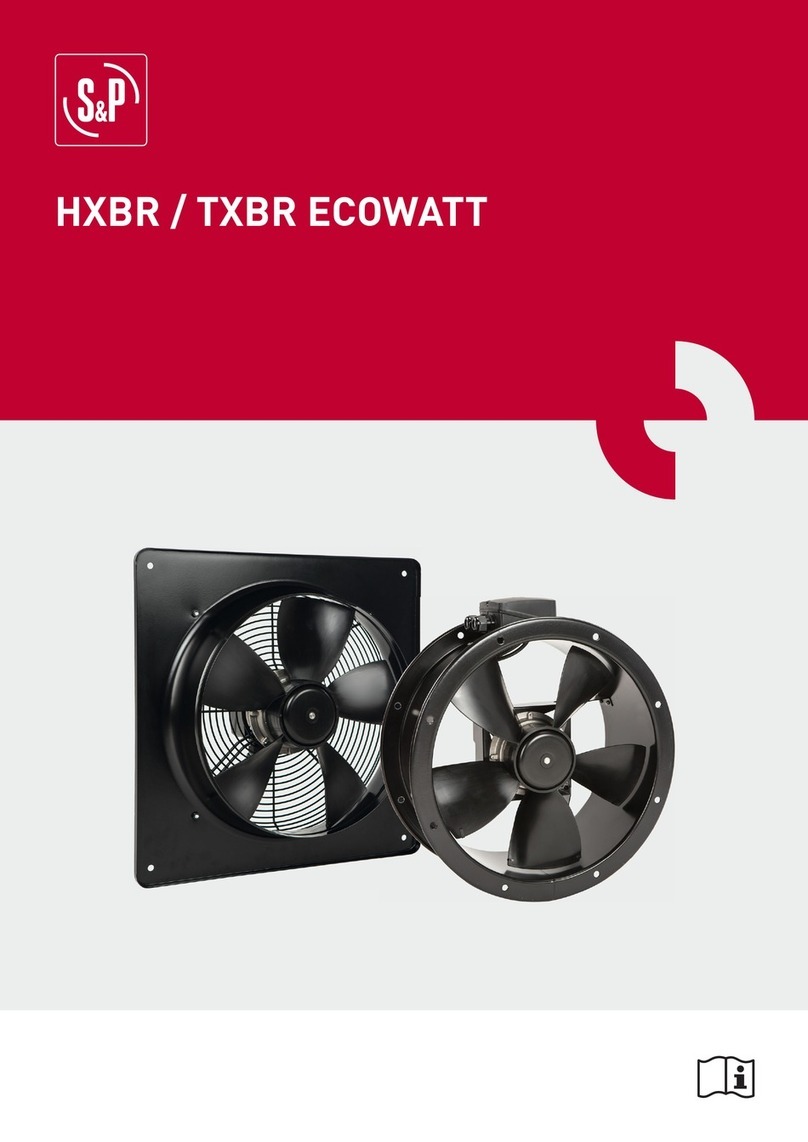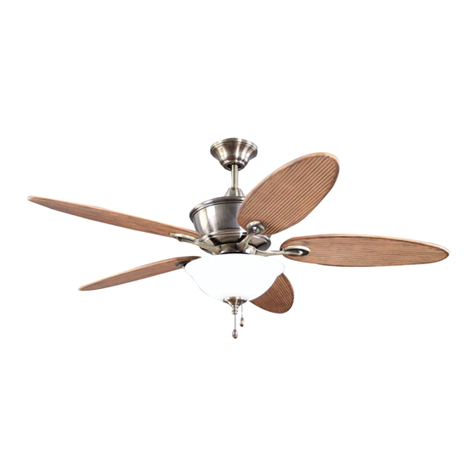
Multi-Unit Residential ERV
9
2. Where the ducts remain permanently accessible, 5 to 10 feet of insulated exible duct
should be used between the ERV and all interior supply and exhaust registers to reduce
fan noise passing the ducting to interior spaces.
Connecting the Ducts
For the air exchanger to run optimally, place the ducts so they are as straight as possible.
Ducts should be kept short and have as few bends or elbows as possible to maximize airow.
Forty-ve degree elbows are preferred to 90-degree elbows. Use“Y” tees rather than straight
tees whenever possible.
All ducts going through unheated areas must be insulated. The ducts between the exterior
vent hoods and the ERV must be insulated and covered with a vapor barrier. See the next
section “Vent Hood Locations”.
Flexible duct is recommended to provide vibration isolation between the unit and duct
system. Start by determining the required duct length to reach each respective collar, and
cut as required. If rigid duct is used, avoid attaching with screws to the duct collars, as they
may interfere with the damper operations at each duct collar.
The EK120 models are equipped with twist-in collars to simplify the process of connecting
exible duct to your ventilator. Remove each duct collar by twisting them out of the locking
tabs. Connect the ducts to the removed collars using duct tape and exible duct straps.
Reinstall collars, with duct attached, to their respective labeled ports on the ERV by lining up
locking tabs and twisting on in a clockwise direction.
*Note: for illustration purposes only. The device does
not represent a specic model.
Note: For fresh air intake, the plastic duct collar with
anti-return ap must be installed so that the ap is hori-
zontal. Use the picture on the left as a reference. The red
line indicates the horizontal position of the ap.
Vent Hood Locations
(Manufacturer’s recommendation only. Also consult Local Building Code Requirement.)
Wall hoods (sold separately) should be placed in easy acess location for cleaning purposes.
Note: Please refer to Installation Instructions packaged with wall hoods.
Fresh Air (Intake) Wall hoods:
• Should be located upstream (if there are prevailing winds) from the exhaust wall hood
• At least 6 feet (2 metres) from the exhaust wall hood
• At least 6 feet (2 metres) from dryer vents and furnace exhaust (medium or high-
eciency furnaces)
• At least 6 feet (2 metres) from driveways, oil ll pipes, gas meters or garbage
containers.
• At least 18 inches (457 mm) above the ground, or above the depth of expected
snow accumulation.
• At least 3 feet (1 metre) from the corner of the building.
• Do not locate in a garage, attic, or crawl space.

